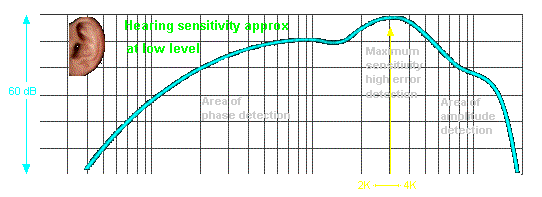

Children with hyperacusis may be more anxious about testing, so allowing plenty of time for the test and giving clear instructions and reassurance can help improve their confidence and therefore the reliability of the results. avoidance of situations, use of ear defendersĪbility-appropriate audiological assessment should be done in a suitable paediatric setting. Even young children can contribute to the history and can help explain the sounds or situations causing the most difficulty. So as clinicians, what do we do when we see a child in clinic who is sensitive to sounds? It is important to take a thorough history when seeing a child in clinic. Anxiety can present with the same behavioural correlates as anger, with the result that the child distressed by sounds who lashes out may end up being restrained rather than comforted. Anxiety in children can contribute to increased auditory gain and in turn to increased vigilance, exacerbating the hyperacusis. Where the environment is busy – for example, a supermarket or children’s party with its multiple sensory inputs (sights, sounds and smells) – this may lead to a ‘sensory overload’ where the child feels overwhelmed and may become distressed or go into a ‘meltdown’. Children with autistic spectrum disorder often have abnormal sensory reactivity with a significant difficulty in auditory filtering. where a child has an exaggerated behavioural response to sensory stimulation including auditory stimulation. Some children with normal development, but particularly those with developmental and learning disorders, may have sensory over-responsivity, i.e. Possible causes are postulated to include a hyperactive auditory efferent system and/or a lack of acoustic reflexes. Those with William’s syndrome have some degree of hypersensitivity to sounds. Some children may have a permanent auditory disorder. The deprivation can lead to increased central auditory gain which, in turn, increases the perception of sound once the glue ear resolves. Temporary auditory deprivation is a common experience in children with recurrent glue ear. This may account for the level of distress that some children experience and the ‘flight or fight’ or panic response. the limbic system and the amygdala, and are stimulated by somatosensory as well as auditory inputs. These pathways project to non-auditory areas of the brain, e.g. Children also use non-classical auditory pathways in loudness perception. There is development of the frontal cortex leading to a decreased susceptibility to interference from environmental stimuli. In parallel, there is development of the sensory gating process which allows us to inhibit distracting or unwanted auditory information. In young children, maturation of the auditory system leads to improving intensity discrimination. There may be different mechanisms underlying hyperacusis in children. Little wonder children don’t like them! “Anxiety in children can contribute to increased auditory gain and in turn to increased vigilance, exacerbating the hyperacusis.” While some definitions of hyperacusis refer to problems with everyday sounds, many of these sounds are really loud (see table). Common sounds which children find troublesome include that of vacuum cleaners, children screaming or playing, hand dryers, emergency sirens and alarms. Sounds which are loud, unpredictable in onset or duration, and over which the child has no control tend to be particularly problematic. Picture simulated from clinical experience of patients. It may also relate to different populations of children, with a higher prevalence in preschool children and children with developmental difficulties, including autistic spectrum disorder. This variability may relate to the variations in diagnosis. The reported prevalence of hyperacusis in children varies between 3.2% and 17.1%. For a few children, the reaction to loud sounds can range from distress to panic attacks which can last for considerable time after cessation of the troublesome sound. For most children, this usually lasts until the noise has stopped. In any noisy environment, it’s a common sight to see children holding their hands over their ears. Sound tolerance symptoms in young patients can be a challenge, Veronica Kennedy and Claire Benton share their clinical experience in navigating the issues that can arise in diagnosis and management.


 0 kommentar(er)
0 kommentar(er)
